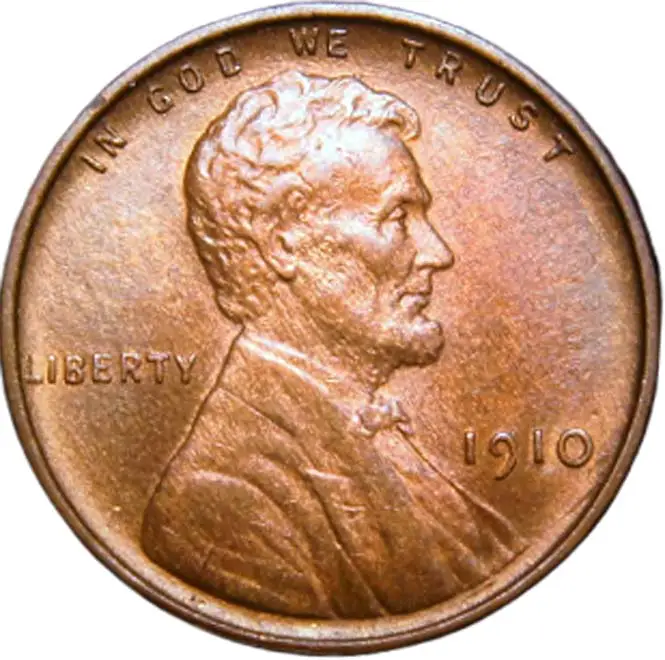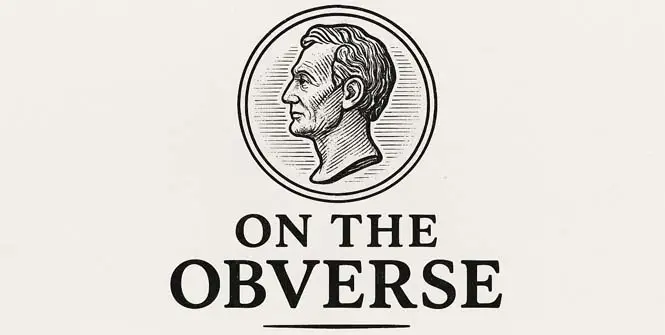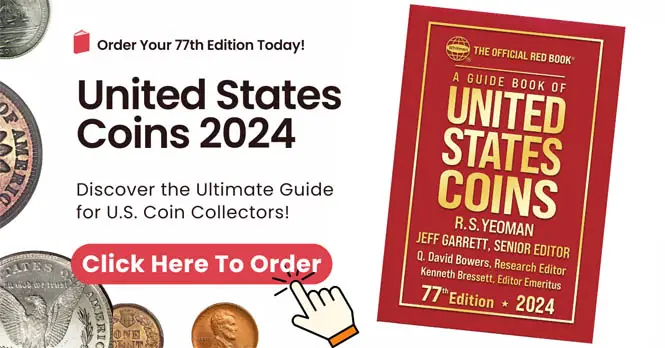- Home
- Lincoln Cents
- 1910
1910 Lincoln Wheat Penny Value | How Much This Cent Worth Today?

Do you own a 1910 wheat penny? How much do you think it's worth?
The value of this US one cent really depends on its state and how it is graded.
A 1910 penny with no mint mark in proof condition could be worth up to $600, but this is very rare and generally they are worth less than $80.
An extremely fine 1910 cent graded by PCGS would be even more valuable.
At auction it could well fetch thousands.
Although it is more than 100 years old, since the 1910 penny was first produced, most are only worth face value.
A major factor that makes these US coins so unique and iconic is the image of Abraham Lincoln on the obverse. Lincoln was the 16th President of the US and his legacy continues to live beyond his death through these old copper one cent coins.
Having championed for the end of slavery and led the US through the American Civil War (1861-1865), that could one of a few reasons why 1910 Lincoln Wheat Pennies attract great admiration and worth.
What Does A 1910 Penny Look Like?
The front side or obverse of the coin has the image of Abraham Lincoln facing to the right.
You will also notice the words "In God we Trust" right above Lincoln’s bust and the word "LIBERTY" to the center left.
On the bottom right of the obverse is the date it was minted and also the location.
A 'D' below the date means it was produced in Denver, a 'S' means San Francisco and if there is 'no mint mark', it was created in Philadelphia.
The reverse or the back side of the 1910 cent has two inscriptions at the center.
One of the inscriptions has the words "UNITED STATES OF AMERICA" and the other inscription has the words "ONE CENT."
The latter represents the value of the coin.
At the top of the reverse side are the words "E Pluribus Unum."
Lastly, on either side of the inscriptions in the center are two stalks of wheat.
Where Were The 1910 Lincoln Wheat Pennies Minted?
Mintmarks are significant in regards to these pennies. If the 'S' mintmark is present under the date of a Lincoln Penny, it means that it was minted in San Francisco. There were 6,045,000 produced that year.
If there is a 'D' under the date, it shows that it was minted in Denver. Moreover, if the coin doesn’t have a mintmark, it’s an indication that the place of minting was Philadelphia. The were 146,801,218 produced in Philadelphia that year.
You won't see a 1910 D penny as none were minted in Denver that year.
Victor D. Brenner was the designer of this one cent piece, but his initials VDB do not appear on this year's version of the US one cent coin as they did on the more valuable 1909 P or S VDB cents.
How is the 1910 Lincoln Wheat Penny Graded?
Grading of a coin as old as this one carries a great deal of significance. Collectors need to know the worth of what they are buying; hence, the reason why grading is imperative.
Generally, grading certifies the condition of a coin. The following are the different grading levels of the Lincoln penny:
Good: This level of grading is for coins that have been in circulation for a substantial number of years. Because of the many years a coin has been in circulation, the possibility of showing signs of wearing out is high. As a result, most of the features of a Lincoln cent will not be as sharp as they were when it was new.
Fine: This level of grading implies that this penny has signs of wear and tear, but it is still in good shape. For example, an inscription, on the penny, like the word “LIBERTY” can be scratched to the extent that it becomes hard to notice it.
Extremely Fine: The coins graded as Extremely Fine are the ones that have been on the market for a small period of time. When observed with the naked eye, it is difficult to notice any indications of wear, but a closer inspection will reveal some indications of wear. Generally, they are more valuable than the above-mentioned.
Uncirculated: An Uncirculated Lincoln cent simply means that it has not been in circulation since it was minted. It has been kept safe since. Even with close inspection, the coin will not reveal any imperfections. Indeed, this is the reason as to why coins graded as Uncirculated are so precious to collectors.
How Much Is A 1910 Wheat Penny Worth?
There are factors, such as mint errors, mint locations, and grade quality that determine the value of the 1910 Lincoln pennies.
One of the factors is the Date and Mintmark combination. What this means is that the coins that have a mintmark under the date fetch a higher value than the ones that don’t.
Specifically, the 1910 S Lincoln Penny has a higher value compared to the version with no mintmark. Collectors will definitely look for the penny with a mintmark if they want a high premium one.
The other factor that contributes to determining the value of the 1910 Lincoln Wheat Penny is its grading. The grading can be one of the following: Uncirculated, Extremely Fine, Fine, and Good.
If it has a grading of Uncirculated, it has the highest value while Good has the lowest value.
Mint Dates and Values:
| Date | VF-20 | EF-40 | MS-60 |
|---|---|---|---|
| 1910 | $1.50 | $4 | $18 |
| 1910 (S) | $30 | $55 | $110 |
(S) minted in San Francisco.
Valuation Source: The Official Red Book 77th Edition 2024
In terms of value, an Uncirculated AU50 1910 cent costs around $10 while an Uncirculated 1910 S Lincoln Penny costs around $80.
An Extremely Fine Philadelphia minted version costs around $4 while an Extremely Fine 1910 S Lincoln Penny is priced around $55.
It is also important to take note that errors contribute to the eventual value of the highly sought-after coin.
Some of the errors include: the doubled die penny and off center strike.
Without a doubt, the 1910 Lincoln cent has been, and will continue to be a collector's item for a long time into the future. With more than 100 years in active circulation, these pennies have a great historical significance to the US.
That is why collectors are in need of owning this one cent coin that was first produced more than a century ago.
More Lincoln Wheat Cents 1909 - 1958
1909, 1910, 1911, 1912,1913, 1914, 1915, 1916, 1917, 1918, 1919, 1920, 1921, 1922, 1923, 1924, 1925, 1926, 1927, 1928, 1929, 1930, 1931, 1932, 1933, 1934, 1935, 1936, 1937, 1938, 1939, 1940, 1941, 1942, 1943, 1944, 1945, 1946, 1947, 1948, 1949, 1950, 1951, 1952, 1953, 1954, 1955, 1956, 1957, 1958.
Return to LostTreasureHQ's homepage and read more about finding the hidden treasures beneath your feet.

Would You Like To Receive More Exciting News And Information About Coin Collecting Direct To Your Inbox?
Enter your email address below, check the boxes and click Send It To Me! now to get your FREE copy of On The Obverse newsletter.




